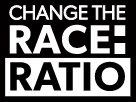Advice from our ED&I Leaders Knowledge Exchange
Our ED&I Leaders Knowledge Exchange met recently to discuss data collection and ethnicity pay gap reporting. They talked about what had worked well for their organisations, what hadn’t, and what they’re planning on doing differently next time.
Read here why data collection is so important when progressing racial equity and five takeaways from the session on the best way to approach it.
Building a more racially equitable workplace
Any organisation looking to build a more racially equitable workplace should start by getting serious about data collection. Without robust ethnicity data, it'll be challenging to work out the best way to make progress.
Data helps companies understand their starting point and provides objectivity when assessing the impact of the actions taken – such as ED&I initiatives.
The importance of data collection
Collecting data on workforce ethnicity isn’t always straightforward; colleagues may not want to disclose their ethnicity and may have concerns around what you’re going to do with their data once it’s been collected.
There might be challenges around data collection, but it’s still worth doing. Through data collection and disclosure, organisations can show commitment to progressing ED&I to their workforce, customers and investors. It’s the best first step on the journey to drive impact and change at pace.
Our ‘Knowledge Exchange’ on data collection
We were joined at our knowledge exchange by Auto Trader’s People and Culture Director, Christos Tsaprounis. Last year, Christos joined forces with 12 other FTSE 100s who report on their ethnicity pay gap to set up Mind the Gap, a campaign to share practical advice on how to approach reporting as well as lobbying government to make it mandatory.
Here are five takeaways from Christos and the signatories in the session on how to make a success of data collection.
Let's jump in.
One. Want to get your workforce on board? Describe the ‘Why’.
Gathering accurate workforce data isn’t always easy, and achieving good rates of disclosure requires trust, transparency and a leadership team who are comfortable talking about race.
So if you’re planning on collecting data from your workforce, start by building trust. How? By being transparent and upfront on the ‘why’ of the data collection, clearly explaining the reasons you’re doing it and the benefits for everyone in the business; more informed business decision making for example.
Two. Make disclosure straightforward
We’ve all been put off by long, complex questionnaires that are tricky to access. So make it as easy as possible for your employees to access and complete the form, keeping the number of clicks to a minimum and the instructions straightforward.
Bear in mind that not all your employees will be based at a desk and screen - if they work in a warehouse or assembly line, for example. Some of our signatories shared their challenges around offline data collection, with one describing the process as ‘disheartening. Our offline response rate was tiny – but still, it’s progress, and lessons have been learned for next time.’
Three. Plan your comms strategy in advance
Building the right comms strategy from the start can make a difference between getting a high disclosure rate and a data collection exercise that never gets off the ground.
Our signatories’ advice? Explain how having robust employee data has the power to benefit everyone and build a fairer workplace.
You’ll need to work across departments to make sure that the forms are reaching the right people, at the right time. And if you’ve got capacity to do so, check in with the campaign every couple of weeks to tweak messaging if you need to.
Four. Anticipate barriers to disclosure
Engagement surveys, data collection....for some employees there’s a very real opposition around data disclosure and a sense of ‘why do you keep asking me for all this information?’
If you can anticipate what the barriers to disclosure are likely to be before you start collecting your data, you’ll be in a better place to understand your employees’ concerns and address them upfront.
Five. Find your data collection champions
While it’s important that your CEO and senior leadership team can articulate why data collection is important, your employee networks and line managers are more likely to have a greater impact when it comes to spreading the message about disclosing ethnicity data.
One signatory described how involvement from the employee networks helped build trust in the process, particularly through video blogs. Through vlogging, employees could articulate why disclosure was important to them, and how it tied in with the organisation’s broader ED&I conversation.
Another signatory shared how getting line manager ‘buy-in’ from the start helped build ‘data collection advocates’, keeping momentum going through the data collection exercise.
Conclusion
Having robust data will help you make the right interventions where there’s a lack of equity in your organisation, but it’s not an end in itself. Armed with the right data, leaders are now able to step up, recognise that they aren’t where they should be, and put forward a plan to change the dynamics of the organisation.
A guide to ethnicity pay gap reporting with contributions from 13 FTSE100 businesses currently doing it.
Learn More


